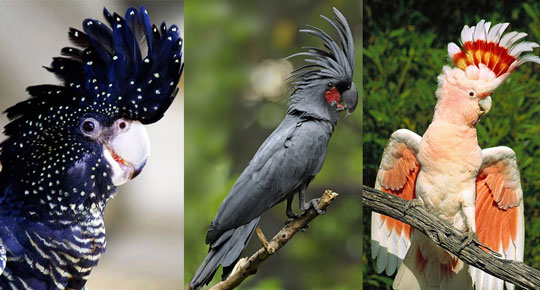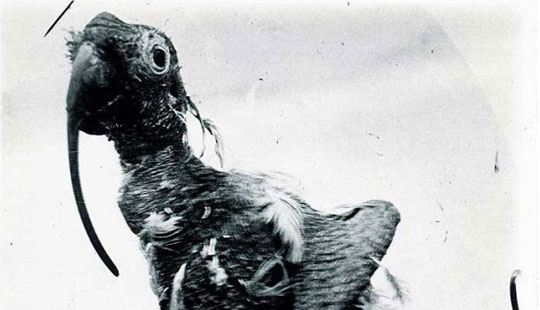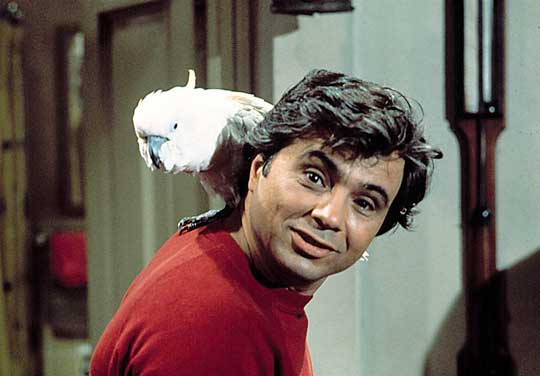|
I enjoy featuring awesome animals that show up in my novels. Today's Awesome Animal appears in Diffusion and Savage (and maybe others?). So what the heck is a Cockatoo? Cockatoos are parrots. There are about 21 species of cockatoos, making up the family of birds known as Cacatuidae. Perhaps the most recognizable thing about cockatoos is their spectacular crest, a group of feathers on top of their heads that they can raise and lower when circumstances require it. They are also typically less colorful than some of the other parrots. Most cockatoos are white, but some are pink, gray, and a few are black. Cockatoos live in Australia, New Guinea, and many islands of the Malay Archipelago. Below is a sulfur-crested cockatoo. Amazing facts about Cockatoos Cockatoos are loud! Their screeches and squawks can make your ears ring, and they can be heard a mile away. BUT... I must add that many reports of their volume are exaggerated. It is common to read that they are louder than a 747 jet. Cockatoos (particularly the Molluccan cockatoo, which is one of the loudest) can put out 135 dB of volume. Let's assume that was measured at about 3 meters away, which is what you would hear if you were in the same room. A jet engine puts out about 150 dB at 30 meters. Without getting into the math to prove it, this roughly means that at 170 meters away, the jet engine would be about as loud as the cockatoo at 3 meters away. So the claim that cockatoos are louder than a jet engine are not entirely accurate (calculations with the numbers provided above reveal that the jet engine puts out about 3000 times more sound energy than the cockatoo). But regardless, these birds are insanely LOUD. You would not want to have a pet cockatoo in an apartment building. Check out this video of a loud Umbrella Cockatoo. Cockatoos can bite hard! Most parrrots can bite hard because they feed on nuts and fruits that are very difficult to tear into or crack open (not to mention they use their beaks to help them climb). But unlike other parrots, cockatoos' lower mandibles have two prongs. Along with the curved single point of their upper jaw, this gives them what is called a three-way bite. So they can do more damage than other birds their size. Reports of jaw strength of parrots vary widely, but it appears that the large macaws can bite with a force of about 400 psi (pounds per square inch), and the larger cockatoos can bite at about 350 psi. Youch! In fact, wild cockatoos are known to cause considerable damage to houses and anything else made of wood. Not all cockatoos are white. Although we typically see several of the white species in pet shops, other species of cockatoos can be a variety of beautiful colors. Below (from left to right) is the Red-Tailed Black Cockatoo, the Black Palm Cockatoo, and the Pink Cockatoo (also called the Major Mitchell's Cockatoo). Cockatoos live a long time. The smallest of the cockatoos, the cockatiel (a very common pet bird) lives 10 - 14 years. But most of the larger cockatoos live 40 - 50 years. Keep in mind, though, that this is their lifespan in captivity, where they tend to live much longer than in the wild. The White Cockatoo has an average life span of 40 - 60 years. Supposedly, the longest-lived cockatoo ever was Cocky Bennett. Cocky was a sulfur-crested cockatoo that lived at the Sea Breeze Hotel at Tom Uglys Point, Blakehurst (New South Wales, Australia). Cocky was known for his "patter." He died in 1916 at the age of 120 years! See photo below. Whether you consider this a good thing or a bad thing, what really boosted the popularity of cockatoos as pets was a 1970s crime show on television. When I was a teenager, I used to watch Baretta, a refreshigly (for its time) gritty cop show about the detective, Tony Baretta (played by Robert Blake). Tony was kind of a loner, but he took comfort in talking to his pet sulfur-crested cockatoo, Fred. Cockatoos are actually wild animals. I know, this seems obvious, but almost all of the available information on cockatoos has something to do with keeping them as pets. But if you read the information above, there are very good reasons to NOT keep them as pets. They are LOUD. They BITE hard. And they can OUTLIVE their owner. So let's not forget that cockatoos are amazing wild birds that are worth understanding better. I have been fortunate enough to travel to Australia only once, back in 1995 (although Trish and I are planning to go again in 2018!!). I remember the first time I saw cockatoos in the wild. We visited Fitzroy Island, and they were common there, chattering and feeding in the trees. I was so enthralled by them! So, as a reminder that cockatoos are not just popular pets, check out this video on the wild parrots and cockatoos of Australia. So, the cockatoo deserves a place in the B.A.H.O.F. (Brilliant Animal Hall of Fame). FUN FACT: The word brilliant originated in about 1680, as the french word, brillant, meaning shining. It has always, and still does, mean sparkling or shining brightly. But it has also evolved (especially in British English) to mean splendid or magnificent, which is a perfect fit for cockatoos. In other words, it is another way to say awesome. Photo Credits:
Sulfur Crested Cockatoo #1 - San Diego Zoo Cockatoos chewing wood - Samantha Dunn Colorful Cockatoos - Pinterest Cocky Bennett - Archive of Sutherland Shire Libraries, Australia Baretta and Fred - NBC News
2 Comments
|
Stan's Cogitations
Everyone needs a creative outlet. That's why I write. Archives
July 2024
|






 RSS Feed
RSS Feed